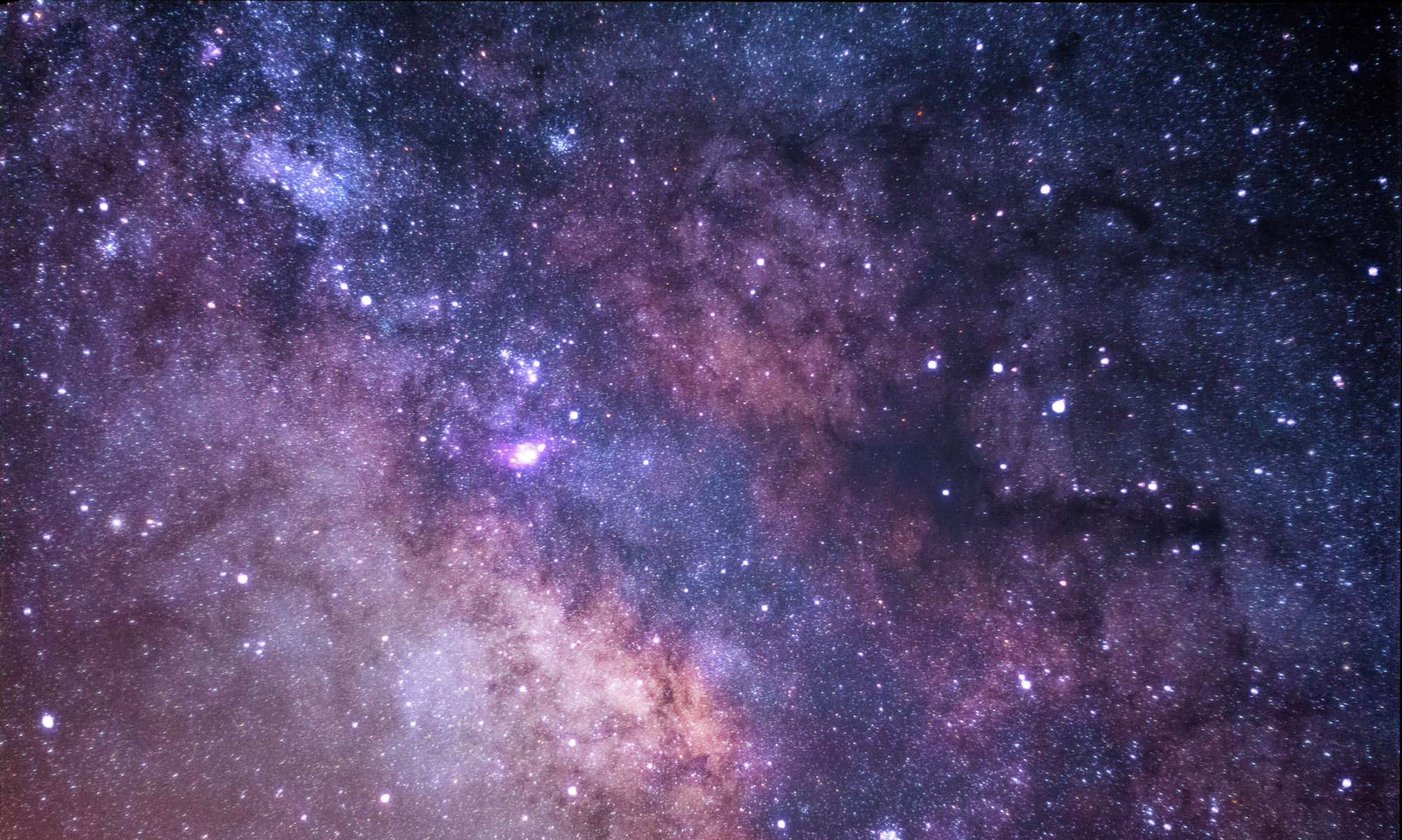In Sanatana Dharma, human life is viewed as a continuous whole in which the past, present, and future are interlinked with each other. Our actions (from past and current births) determine our results (for the current and future births). Karma is defined as both action and the results of an action. If life is based on our Karma and we are free to create our own destiny, what then is the role of the planets in Astrology? Planets or Grahas, as they are referred to in Vedic Astrology, are said to only influence and not determine our life. What ultimately happens is said to be a combination of the planetary influences and our own actions. While this is helpful, it certainly begs for more clarity.
There are four types of Karma:
Sanchita Karma
The is the balance sheet of all good and bad actions accumulated over past births.
Prarabdha Karma
It is said that the accumulated Sanchita Karma is too vast to be experienced in one lifetime. Only a portion of it is assigned to the native to experience in this current life. This is Prarabdha Karma and is seen in the native’s astrological charts. This is essentially the balance sheet that one starts with at the time of birth. There are also different levels of magnitude of Prarabdha Karma. Based on planetary positions in the natal and horary charts, we can determine the strength of these influences. These are broadly classified into three types: Fixed (Dhrida), Changeable (Adhrida), Mixed (Dhrida-Adhrida). Fixed Karma represents those influences that are too strong for an individual to overcome. Changeable Karmas refer to those influences that are easily changed with effort and remedies. And Mixed Karmas, as the name suggests, is a mid-way between the two. When using astrology for predictive purposes, it is important to see if there are any Fixed Karmas in the chart. When such Karma is present, the native will experience the ascribed favorable or unfavorable results no matter what their actions are during that period. The time has come to either reap the fruits of good karma or pay off the debt of bad karma. There is no escape. In the case of an unfavorable period, the only option for the native is to surrender to the will of God and allow the Karma to burn away. Resistance will simply lead to more suffering.
Kriyaman Karma
This is the part that deals with our free will – our ability to perform new karma in our response to situations no matter what they are. Even if the native is experiencing an unfavorable period, they can still decide how to respond to it. If they continue to perform good actions, they will definitely experience the results for the same either in the current lifetime or in a future birth. If they surrender and perform actions bereft of the sense of I-doership, then they will not even accumulate karma. Because even good karma done with the sense of I-doership might require additional births so that you can experience the good results for the same. To make better predictions, the astrologer must also consider the Kriyaman Karma performed by the native. This is where the horary (Prasna) chart is useful. The chart cast at the time of the native’s query offers the latest karmic balance sheet, accounting for both the Prarabdha Karma from past lives and the Kriyaman Karma performed in this life.
Agami Karma
This part also deals with free will but represents those actions/results that are coming in the future as a result of current thoughts. For example, let’s say that you need to go shopping and it’s raining heavily which is much to your displeasure. You cannot wish this rain away. You can perform the Kriyaman Karma of taking an umbrella with you and the Agami Karma of planning to go shopping in the future only after checking the weather forecast for the day.
As such, there is sufficient free will in our lives to help us chart our journey for the present and the future. The goal of astrology is to give the native an insight into their karmic balance sheet and the purpose of their current life, all in order to lead to greater self-awareness, self-development, and ultimately self-realization.



Sir i am shashikant suffering from past life karma not happy in this life pls help me my mail id is [email protected]
Dear Shashikant. Although I’m not offering free consultations at this time, I’ll make an exception for you. Please share your birth details (date, time and place) and questions with me by email at vijayjyotishofficial AT gmail.com. I’ll try to look into this in the next two weeks. My best wishes to you.
Suppose if a person made efforts to get moksha but didn’t get moksha in that birth. Then he/ she will surely have to take next birth. In next birth, the person may or may not remember his/ her aim so that he/she may or may not do efforts to get moksha . If the person forgets the aim of moksha in the next birth , will his / her efforts done in the past life go in vain?
Dear Arpit. While all of our accumulated material assets have to be left behind at death, our spiritual advancement will carry forward to the next lifetime. In your next life, you will be placed in circumstances that will allow you to continue this spiritual journey from where you left off. This is guaranteed by Lord Krishna in the Bhagavad Gita Chapter 2 Verse 40. See this link for more information: https://www.holy-bhagavad-gita.org/chapter/2/verse/40
In spiritual path, one starts off from the point where one left off in the previous birth..Bhagawan Sri Krishna in Gita Chap 2 sloka 40, says – Nehābhikrama-nāśho ’sti pratyavāyo na vidyate
svalpam apyasya dharmasya trāyate mahato bhayāt
This logic applies to spiritual sadhana only that every little effort/kriya done towards getting liberated(mukti) is added cumulatively from lifetime to lifetime.
A classic example of this is Sri Ramana Maharshi who is widely believed to have attained self realization while he was still alive (Jeevan Mukta). Understandably, it was his sadhana of several lifetimes that culminated into fructification in this life.
Very good explanation. Thanks for clearing my confusion. One can get moksha by his/ her own efforts.
Thank you, Arpit.
Thank you Sir for answering my queries. So according to your answer it is not necessary to burn off all of sanchit karmas to get moksha. If it is so then there arise question :Do our sanchit karma not create hurdle for moksha? To what extent sanchit karma should be cleared to get moksha?
Dear Arpit. Yes, Sanchita Karma will present hurdles as you search for self-realization. However, Sanchita Karma is too vast for you to burn it down to a level before it will stop interfering. This will be a continuous sub-conscious influence. To achieve moksha, you don’t need ideal circumstances. You only need to give up the mind and all its self-limiting ideas/beliefs. One such self-limiting belief is that you must burn down Sanchita Karma to a point where it is no longer obstructing you. Like this, there are many such self-limiting ideas/beliefs in one’s mind which when challenged will fall away. For moksha, all that is required is a sincere effort and intense longing for that and that alone. And if you are ready, the divine grace will grant it to you regardless of all your Sanchita Karma.
To achieve moksha, try to be like the lotus flower. In Hinduism, the lotus flower is a metaphor for self-realization. It flowers both in mud & water… and its petals are open to the Sun (God). A few of them are picked and offered to God. Similarly, self-realization does not need ideal circumstances. You can realize the self no matter where you are. Like the lotus, a persistent few will find self-realization.
I also recall what Ramakrishna Paramahamsa told Swami Vivekananda about how he could realize god or the self. Ramakrishna says that this is possible if one can continuously meditate with a singular focus on his inner self for three days. So that’s all it takes – three days of singular focus on the inner self. But it’s easier said than done. Today, we have trouble keeping focus on anything for a minute. So that’s they obstacle if anything – focus and our ability to pay attention in towards the seer.
Thanks for answering my queries. I still have a question: Even if a native tries best to get moksha as you have answered, can not sanchit karma become hurdle for achieving moksha? If sanchit karma can become hurdle then to what extent sanchit karma should be dissolved to get moksha?
What are the effective ways to burn many of sanchit karmas as fast as possible in the present life? What are the astrological indications of moksha? Can astrology determine the number of births need to be taken to get moksha?
Dear Arpit. The Sanchita Karma is too vast to burn away in one lifetime or even a few. You can gain insights into the possibilities and inclination of a native towards moksha by analyzing the 8th house, 12th house, related karakas and the D60 Shashtiamsa chart. No, you cannot determine the number of births needed before one will get Moksha. The divine grace will grant it when the soul is ready for it. All you can do is endeavor till you are picked up by the divine grace.
To acheive Moksha in this life, I would recommend a two-fold path:
(1) Stop performing new karma with the sense of ‘I-doership’. I-doership simply refers to any action that is performed with the belief “I am the doer of actions”. When you become the doer, you also become the sufferer of those actions. This feeling of I-doership is a false idea propounded by the ego which when challenged through atma-vichara will fall away. In reality, none of our actions are done by us. Every single action is pre-ordained by the divine. So if we stop associating with this false idea that we are the doer of actions, we will stop accumulating karma (good and bad). This comes with complete surrender and dedication of one’s actions to God.
(2) In this world, there is a seer and the seen. You are the seer and the objects in this world are the seen. The mind naturally pays attention to the external seen objects. By simply turning that attention in towards the seer, ask the question “Who is it that is seeing?”. You are THAT. You will not get an answer to this question. Keep focusing your attention inward. Your mind will wander but you can bring focus back inward soon after it wavers. As you search inward, it is said that the manifest mind will at one point in your sadhana disappear and dissolve into the self thereby giving you moksha and revealing who you truly are.
Thanks for answering my queries. I still have a question: Even if a native tries best to get moksha as you have answered, can not sanchit karma become hurdle for achieving moksha? If sanchit karma can become hurdle then to what extent sanchit karma should be dissolved to get moksha?
How can we know about sanchit karma of native studying birth chart?
Dear Arpit. We can know about our Sanchita Karma using the D60 Shashtiamsa chart. It offers insight into why we are born into this life and what karma is blocking us from achieving self-realization. It shows the repository of karmas that are influencing our deep subconscious which in-turn determine our spontaneous reactions to situations emerging around us.
hello sir,
i like that you write this blog with such a good way that anyone can understand it.but i have samll confusion.
you have mention four types of karma (sanchita,prarabdha,kriyamana,agami).
but many astrologer say that there are only three 3 types of karma(sanchita,prarabdha,kriyamana) so due this i am getting confuse.
it will great if you can clear my confusion.
thank you
Thank you for your feedback, Henish. The other astrologers are also right when they say there are only three types of karma. This is what I learned from my own guru as well. However, I consciously chose to put Agami karma as the fourth type of karma to emphasize its importance. Agami karma is an important part of our Kriyaman karma. While Kriyaman karma generally represents our free will response to life unfolding around us, Agami karma specifically represents those free will thoughts/actions that will influence our future. So it’s important from my point-of-view not only to act according to the situation (Kriyaman karma) but also develop a mind-set of positive/powerful thoughts and beliefs (Agami karma) in order to put us on a path to a greater/better future. Hopefully that makes sense.